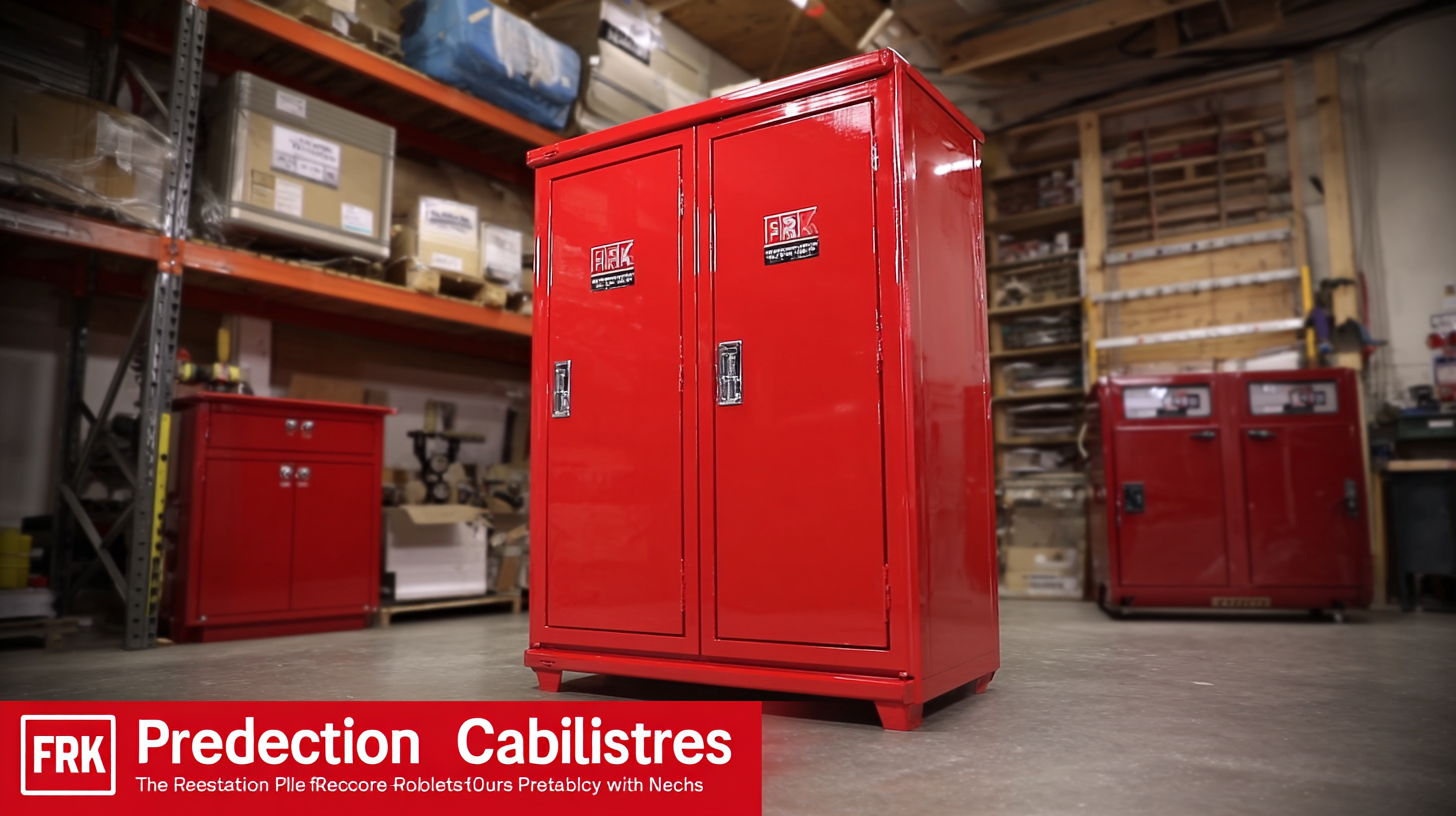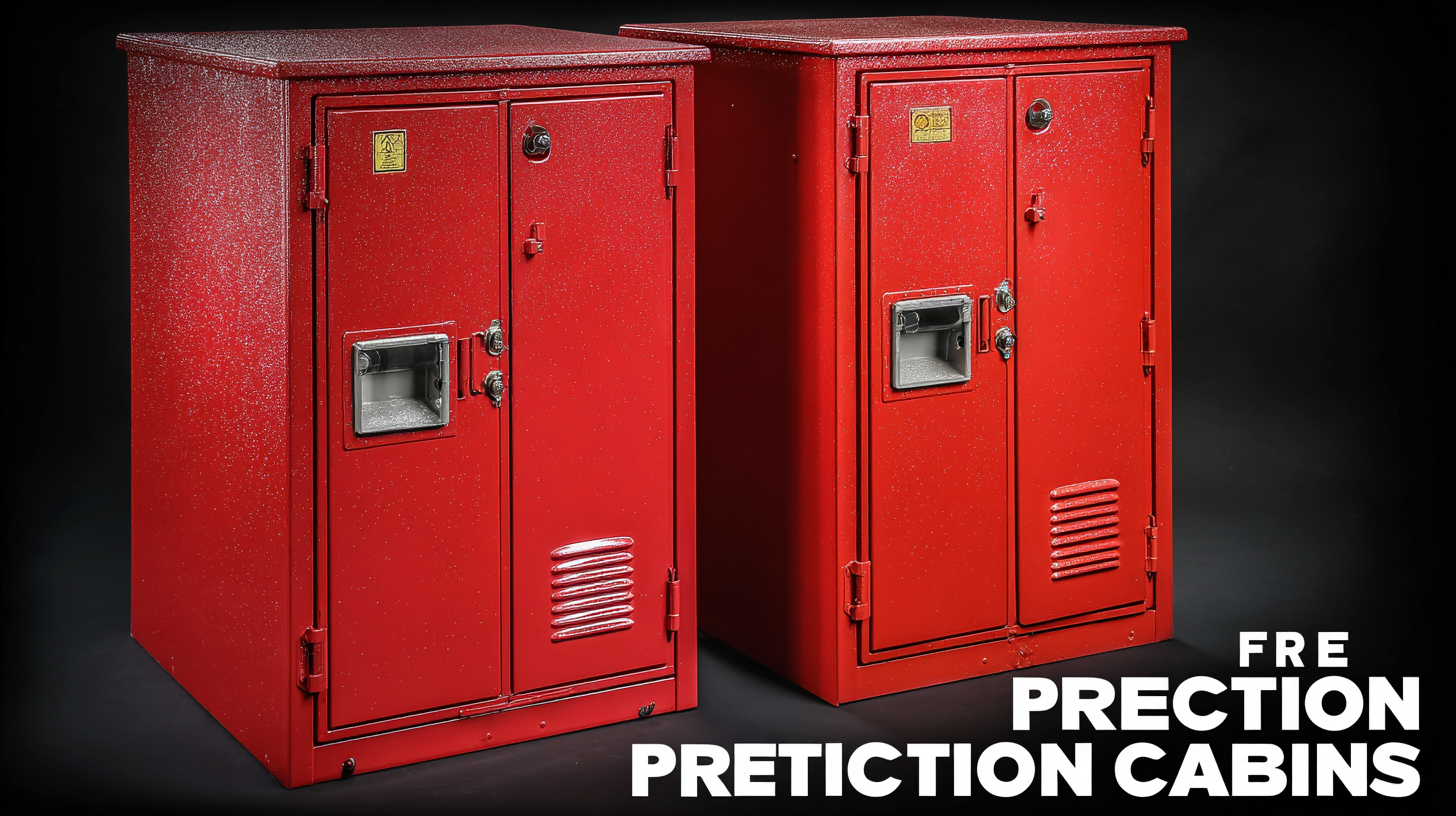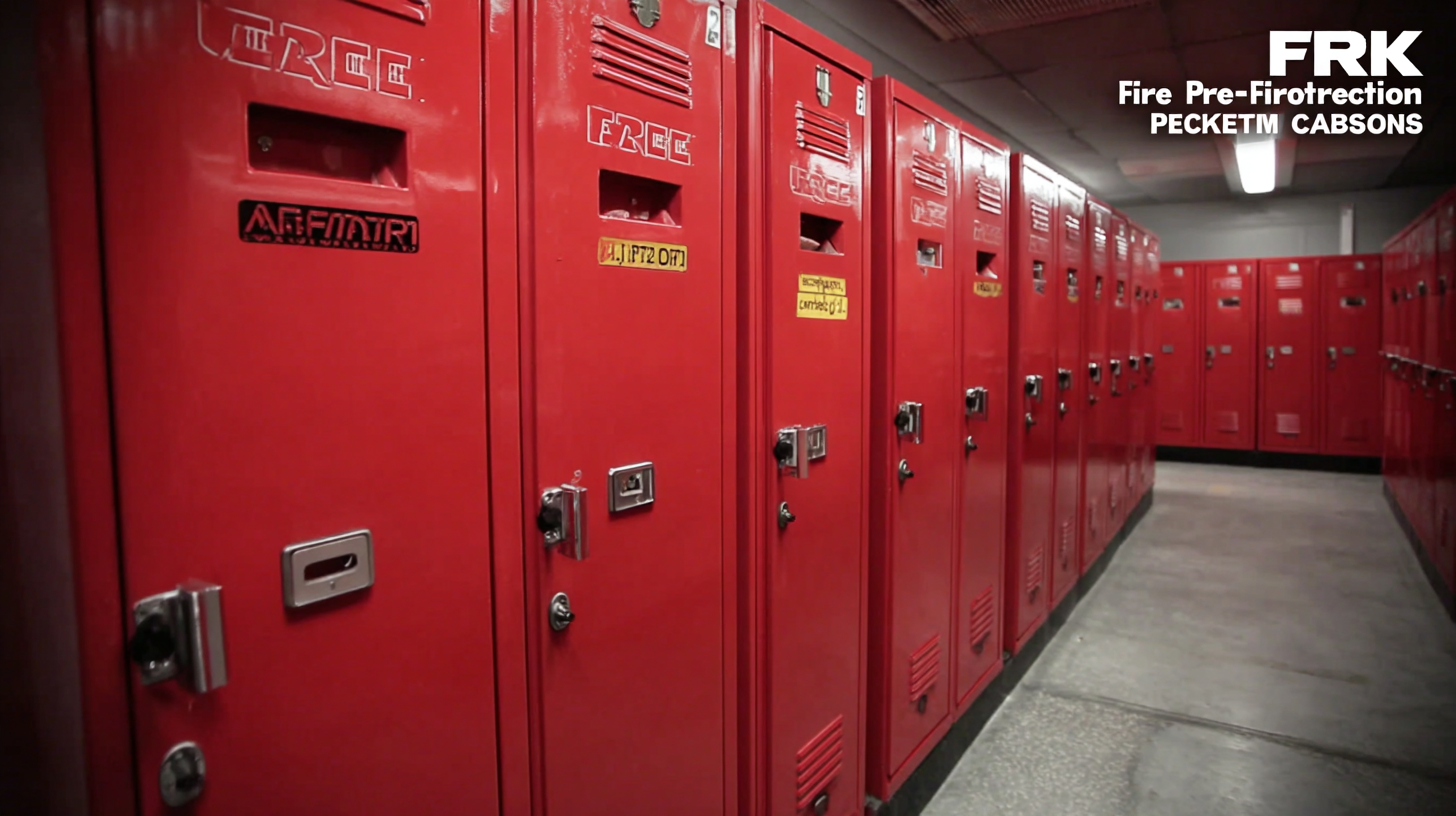Issues with Selecting the Right Fire Protection Cabinets for Your Needs
In today's industrial landscape, the importance of effective fire safety measures cannot be overstated, particularly when it comes to the selection of Fire Protection Cabinets. According to the National Fire Protection Association (NFPA), an estimated 3,390 structure fires were reported in warehouses in 2021, resulting in millions of dollars in property damage and highlighting the crucial need for proper fire protection strategies.

Fire Protection Cabinets serve as a vital line of defense, safeguarding hazardous materials from ignition and minimizing potential hazardous incidents. However, with the plethora of options available and varying industry standards, selecting the right Fire Protection Cabinets tailored to specific needs becomes a daunting task. Understanding the benefits associated with different types of fire cabinets can help organizations enhance their safety protocols and ensure compliance with regulations, ultimately protecting both assets and lives in the event of a fire.
Understanding Different Types of Fire Protection Cabinets and Their Features
When it comes to fire protection cabinets, understanding the different types available is crucial to selecting the right one for your needs. Fire protection cabinets are designed to safeguard flammable materials, vital records, and equipment from fire hazards. The most common types include flammable liquid storage cabinets, toxic chemical storage cabinets, and electrical equipment cabinets, each with specific features tailored to the materials they protect.
Flammable liquid storage cabinets are typically constructed with double-walled steel and have features like self-closing doors and built-in ventilation systems to prevent fire hazards. These cabinets are essential for workplaces that handle a variety of liquids, ensuring compliance with safety regulations. In contrast, toxic chemical storage cabinets are designed with secondary containment features, such as spill trays, to manage leaks or spills, keeping hazardous materials secured and minimizing risks. Finally, electrical equipment cabinets provide protection for crucial electrical components, often incorporating design elements that resist heat and flame, safeguarding against electrical fires. By understanding these features, you can make informed decisions that align with your safety requirements.
Key Considerations for Choosing the Right Fire Protection Cabinet for Your Needs
When selecting the right fire protection cabinet, there are several key considerations to keep in mind. First and foremost, assess the specific materials and chemicals you need to store. Fire protection cabinets come in various designs, such as flammable liquid storage or safety data sheet cabinets, each tailored to different substances. Understanding the nature of the materials will guide you toward the appropriate cabinet that meets regulatory standards and provides maximum safety.
Another crucial factor is the cabinet's fire rating and durability. Different products offer various degrees of fire resistance, often rated in hours. Choosing a cabinet with a higher fire rating can offer additional peace of mind, especially for businesses that handle hazardous materials. Additionally, consider the cabinet's construction, including its materials and lock mechanisms, to ensure robust security and compliance with safety regulations. By focusing on these critical aspects, you can make an informed decision that enhances safety and meets your storage needs effectively.

The Role of Fire Ratings and Compliance Standards in Selection
When it comes to selecting fire protection cabinets, understanding the role of fire ratings and compliance standards is essential. Fire ratings indicate how long a cabinet can withstand exposure to fire without compromising its contents. This is often measured in hours; for example, a cabinet rated for one hour is designed to protect against fire for that duration. Choosing the right fire rating is crucial, as it directly impacts the safety of valuable documents and materials you intend to store.
Compliance standards, such as those set by the National Fire Protection Association (NFPA) and Underwriters Laboratories (UL), provide guidelines that manufacturers must follow to ensure safety and effectiveness. These standards help users assess the protective capabilities of a cabinet and ensure it meets legal and insurance requirements. When selecting a fire protection cabinet, it is vital to verify that it meets these established standards to ensure both compliance and protection. Knowing the fire ratings and compliance benchmarks will significantly aid in making an informed choice tailored to your specific needs.
Comparative Analysis of Fire Protection Cabinets: Costs versus Benefits
When selecting fire protection cabinets, it's essential to conduct a comparative analysis of their costs versus benefits. Much like evaluating electric vehicle charging systems, an informed decision on fire protection cabinets involves considering both the upfront expenses and the long-term implications for safety and compliance. The initial price of a cabinet may be enticing, but understanding how it fits into the broader context of your fire safety strategy is crucial. A thorough assessment of the total cost of ownership can provide insights into which options deliver the best value over time.
Furthermore, just as various charging systems for electric vehicles have differing impacts on greenhouse gas emissions, the choice of fire protection cabinet can also affect operational efficiency and safety. Investing in higher-quality cabinets may have a greater upfront cost, but they often come with better features and durability, potentially reducing costs associated with replacements and emergencies in the long run. By examining not only the price tags but also the potential benefits and risks, organizations can make choices that align with their specific needs and regulatory requirements, ensuring better protection against fire hazards.

Maintenance and Durability Factors to Consider Before Purchase
When selecting fire protection cabinets, maintenance and durability are critical factors that can significantly impact their effectiveness and longevity. According to the National Fire Protection Association (NFPA), nearly 35% of fire-related incidents are attributed to equipment failure or improper maintenance. Therefore, investing in durable cabinets made from high-quality materials like steel or reinforced composites can significantly reduce the risk of such incidents.
Tips: Always check for certifications from recognized bodies, as well-maintained cabinets can withstand extreme temperatures and prevent significant damage to stored materials. Opt for cabinets that feature a self-closing mechanism and a three-point locking system to enhance safety and compliance.
Furthermore, routine inspection and maintenance schedules should be clearly outlined prior to purchase. The Fire Equipment Manufacturers’ Association (FEMA) recommends quarterly inspections to ensure the cabinets remain in optimal condition. Additionally, cabinets with corrosion-resistant finishes can significantly prolong their lifespan, especially in challenging environments. By proactively addressing these maintenance factors, you can ensure your fire protection cabinets perform effectively when they are needed most.
